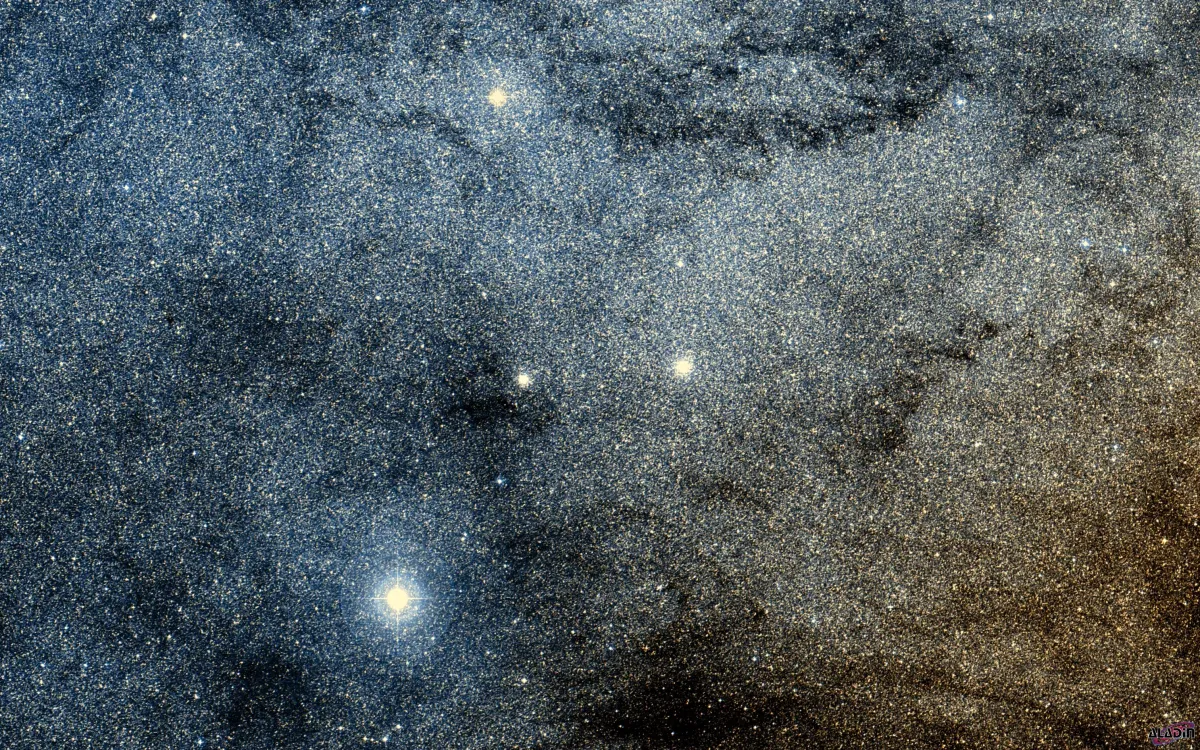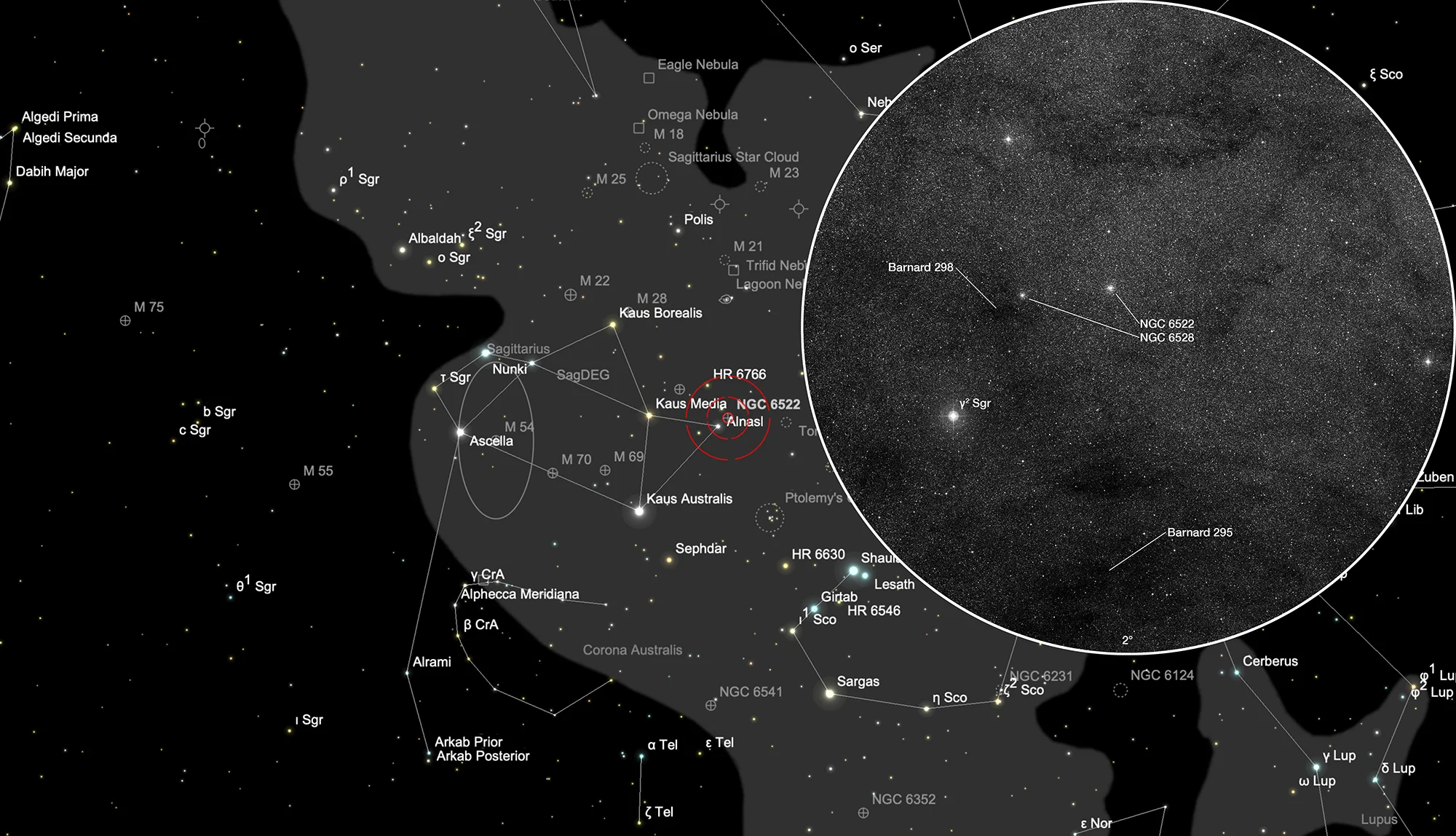Globular Clusters NGC 6522 & NGC 6528

History
These two globular clusters were discovered by William Herschel on 24 June 1784. For I 49 (NGC 6522) he noted: «Bright, pretty large, brighter in the middle, resolvable.» For II 200 (NGC 6528) he noted: «Faint, pretty small, resolvable, unequally bright.» [463] John Herschel observed these clusters on 3 August 1834 from South Africa and recorded them as h 3720 (NGC 6522) and h 3723 (NGC 6528). He identified them as globular clusters and noted: «Both this and I 49 occur on a ground so astonishingly rich and stippled over with stars 17 m individually discernible, as hardly to admit a pin's point between the stars, and this fills more than the whole field or many fields.» [11]
Edward. E. Barnard found on photographs he made several irregular dark clouds near clusters NGC 6522 and NGC 6528. After his death in 1923 these were listed as B 295 and B 298 in the «Photographic Atlas of Selected Regions of the Milky Way», published 1927. [609]
Physical Properties
These two globular clusters are located in the bulge of the Milky Way, circa 1 kpc away from the Galactic centre in a region with relatively small amounts of interstellar gas called Baade’s Window.
| Name | RA | Dec | Type | vMag | Dim | MD | Dreyer Description | Identification, Remarks |
|---|---|---|---|---|---|---|---|---|
| NGC 6522 | 18 03 34.1 | -30 02 00 | GCL (VI) | 9.9 | 9.4 | 7.700 | globular, B, pL, R, gvmbM, rrr, st 16 | WH I 49; h 3720; GC 4359; GCL 82; ESO 456-SC43 |
| NGC 6528 | 18 04 49.6 | -30 03 19 | GCL (V) | 9.6 | 5 | 7.900 | globular, pF, cS, R, gbM, rrr, st 16 | WH II 200; h 3723; GC 4364; GCL 84; ESO 456-SC48 |
Finder Chart
The globular clusters NGC 6522 and NGC 6528 are located in the constellation Sagittarius. They are on 23 June in opposition to the Sun. From your location it can best be seen in the months February to November.
